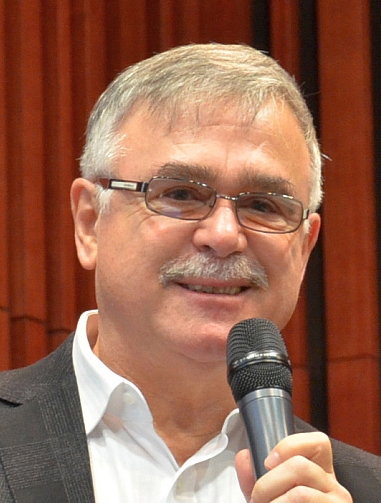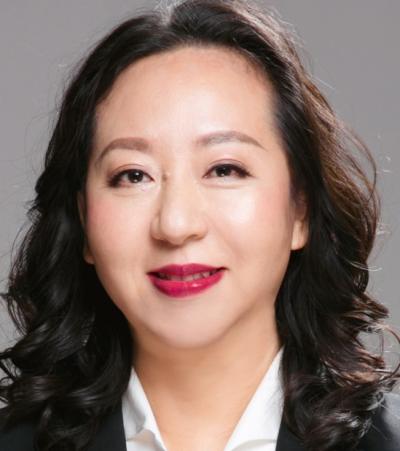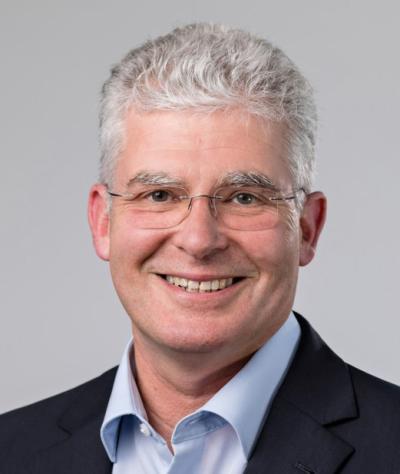It gives me great pleasure to kick off 2022 with a forecast of technology and business trends for sensors/MEMS (Micro Electronic Mechanical Systems). I am best known for my annual MEMS Industry Commercialization Report Card Market Study.
available annually since 1998 as a critical assessment of the results of MEMS commercialization efforts for the previous year. With the help of my colleagues and co-contributors, we are now looking forward instead of back.
Contributors to this technology and business trends outlook represent the worldwide sensors/MEMS industry based on their industry role, extensive experience and knowledge. They are from China, Germany, Austria and the U.S. The full spectrum of the industry is represented: device/system design, infrastructure vis-à-vis wafer foundry, industry association and marketing/sales by me.
Especially poignant: we are still in the throes of the Covid Omicron virus pandemic and contributors have been asked to address potential impacts of the continuing virus. These insights are meant to assist industry managers in assessing their business strategies. (Note: All comments have been lightly edited for clarity.)
Janusz Bryzek, Ph.D., executive chairman of Exo Imaging Inc. makers of MEMS-based medical diagnostic systems

Over the last two decades, performance of thin-film piezo materials significantly improved and matched their crystalline version, improving ultrasound transmit efficiency and receive sensitivity. Multiple consumer applications emerged, including inkjet printers, gesture recognition, speakers, autofocus modules, fingerprint sensor, time of flight sensors, and others.
The 2022 ultrasound transducer market is estimated at about $4.7 billion, growing about 5.1% a year. This market is served by a broad range of technologies. The newest ultrasound transducer is a piezoelectric micromachined ultrasonic transducer (pMUT), based on deposited piezoelectric layers on silicon MEMS wafers, a process that retains advantages of traditional discrete transducers with the benefits of integration.
For me, the most rewarding applications are medical to help bring healthcare abundance to all. The first handheld ultrasound imager based on pMUT will be introduced in 2022 by my company, Exo Imaging, creating an inflection point. The initial market will support the crowd of about 50 million medical professionals, reaching 1 billion consumers over time.
Kurt Petersen, Ph.D., member of Silicon Valley Band of Angels, venture capital angel investors
Important novel, recent process capabilities commercialized only over the past 5 years will significantly transform the development of revolutionary, next generation MEMS products. Today, high reliability, high volume production-capable, piezoelectric films (AIN and PZT) are fully commercially available in many foundries. These materials are already being used for microphones (Vesper), the first generation of MEMS speakers (USound), and ultrasonic imagers (eXo and Butterfly Networks). However, these are only the first wave of a new class of piezoelectric-actuated devices which will represent new families of MEMS products.
New production processes for glass wafers will also transform--maybe even our definition of--MEMS. Very high-density TGVs (Through Glass Vias), glass/glass wafer level bonding, and glass wafer level optics are now commercially available and in limited volume production. Using TGV and glass-glass bonding, Menlo Micro is in production with the newest generation of MEMS switches and maybe (finally) *the* first completely successful MEMS switch products. It is significant that these products are *ALL* glass, no silicon, thank you, a breakthrough in MEMS technology.
Other new production processes which will have powerful impact in the upcoming years are ultra-thin substrates (less than 50 micrometers), DRIE (Deep Reactive Ion Etching) etch-rates now greater than 50 micrometers per minute and future applications of the epi-seal process made famous by SiTime resonators. It is a great time with ever-increasing MEMS process capabilities to be inventing and commercializing new MEMS products.
Lucy Huang, Ph.D., CEO of Hanking Electronics, a MEMS/Semiconductor silicon foundry

Chip shortages have been seen in the global supply chain in the past year in MEMS as well as ICs (Integrated Circuits). This will drive investment and growth in the MEMS foundry business. Prior to the COVID shutdowns, the MEMS foundry business in China had already moved from 100- & 150-mm MEMS fabs as well as CMOS (Complementary Metal Oxide Semiconductor) surface micromachining to large 200mm MEMS wafer fabs.
There are several different basic MEMS process technologies such as capacitive, piezoresistive, magnetic and piezoelectric processes. To accommodate this range of processes a foundry must be flexible to meet a wide range of customer requirements. Materials like gold, scandium, zirconium, and process that are not compatible with CMOS foundries are able to be manufactured in dedicated MEMS wafer fabs.
This approach enables new technologies and materials like piezoelectric and IR sensors and actuators to be fabricated for large volume consumer applications. Turn-key solutions with PDKs (Process Design Kits) and developed processes are preferred by global and Chinese customers and Hanking Electronics offers design-fab-assembly services. We see many foundry customers who want to expand more local, Chinese wafer fab content to meet regional needs going forward into 2022 and beyond.
Ferruccio Bottoni, CEO of USound makers of MEMS-based speakers

The Covid pandemic will continue to have a double-sided influence on the sensors and MEMS industry in 2022. On the one hand, the pandemic pushes specific technology applications in work and private life due to changes to daily life such as remote working and limited traveling. These applications include wearables of all kinds, communication and telecommunication devices, health management devices, or even remote medicine.
The result of these circumstances will be another push for already existing products and devices containing sensors and MEMS technology. On the other hand, for newly developed products and applications, there will be a detrimental effect on the introduction to market because Covid has delayed, canceled, or frozen product development and supply chains, creating an additional barrier in commercialization, as was already witnessed in 2021.
New-to-the-world products and innovations will get increasingly hard to commercialize, while additions or improvements to established products, like new versions, will see a boom.
Klaus Hecker, Ph.D., managing director of the Organic and Printed Electronics Association

Direct and indirect factors of the Covid-19 pandemic also hit the flexible and printed electronics industry, as international supply chains will not run smoothly again in 2022. But on the other hand, the interest in flexible and printed sensors has been boosted by the pandemic due to the increased demand in medical devices to monitor vital functions. Printed sensors, seamlessly integrated in smart patches, and combined with a printed battery are easy and comfortable to wear.
Such patches enable the monitoring of body temperature, breath and heart rate and even keep the blood oxygen level under surveillance. Connected to a mobile device, this technology enables remote patient monitoring and relieves hospital staff of routine measurements. This approach has been tested during several pilot projects last year and major medtech companies are currently preparing products. The growing relevance of printed sensors and devices in medical and pharma industry was also visible at CES 2022 in Las Vegas.
Another key trend in printed electronics are automotive applications. Here we see many product launches for sensor surfaces, integrating printed touch sensors in plastic claddings like center consoles in automotive interiors. Mechanical switches are replaced by injection molded electronics that are thin and lightweight. Recent examples are switches and HMIs (Human-Machine Interface) in the ID series of Volkswagen or at the center console of BMW iX launched at CES 2022.
Roger Grace, president of Roger Grace Associates, a sensor/MEMS sales and marketing consultancy

From a market size/growth perspective, several market research organizations who track the sensors/MEMS markets estimate the worldwide sensors market to be approximately $190 billion in 2022 with an about 10% annual growth rate over the next several years. I believe that there will be several application sectors that will lead this growth including IoT, e-health, wearables (especially with printed/flexible sensors) and automotive. Automotive will benefit from the need to require more sensors per vehicle, the growth of autonomous and electric vehicles and the beginning of the adoption of hydrogen power plants. I also see the increase in sensors for environmental monitoring, agriculture and smart home applications.
From a marketing/sales strategy perspective, I believe that the expected continued presence of Covid into mid-2022 will have a significantly negative impact (but at what level?) on attendance at trade shows for 2022 and into the near future. The big daddy of U.S. trade shows, the Consumer Electronics Show in January 2022 had an attendance of 40,000 versus 170,000 in 2020. Sensors Converge in September 2021 hosted approximately 2,000 attendees versus its typical 6,000.
I have attended and presented at a number of virtual and hybrid conferences in 2021 and I believe that they will continue to play a significant role in the marketing strategies of sensors/MEMS companies in 2022. Many of these conferences, I expect, will be offered in a hybrid mode with both in-person and web-based participation and/or will be rescheduled to later in 2022. Additionally, social media-- especially enhanced websites, email campaigns and video-- will play an ever more important role in the marketing/sales strategies of these firms because of their high efficacy and proved performance in 2021.
Conclusions
Suffice to say, I and my co-contributors remain hopeful and believe that the sensor/MEMS industry will continue to grow and prosper despite a possible continuation of Covid well into 2022. While expected challenges exist, including supply chain, workforce supply and diminution of marketing vehicles including trade shows, there appears to be several new technologies and applications as well as alternative marketing approaches perfected in 2021 that will continue to propel the sensors/MEMS industry forward in excess of the projected 10% growth and a projected worldwide sales level of $190 billion in 2022. Many companies have been able to pivot and exploit application opportunities afforded to them by Covid especially in the medical diagnostics sector enabled by emerging technologies including pMUT and printed/flexible sensors. I expect this phenomenon to continue into 2022.
The best strategy moving forward for the sensors/MEMS community is to stay the course, continue to be resilient and to embrace the strategies successfully adopted during 2021 and to use lessons learned to fine tune them to meet the anticipated ever-changing landscape of the new normal marketplace emerging in 2022.
Roger H. Grace is president of Roger Grace Associates, a Naples, Florida-based marketing consultancy he founded in 1982 that provides market research, strategic marketing communications and business development services to the MEMS, sensors and capital equipment industry. He can be reached via email at [email protected]. His background includes over 40 years in high frequency analog circuit design engineering, application engineering, project management, product marketing and technology consulting.
He was a founding member of MANCEF and currently is its VP of the Americas.Specializing in microelectromechanical systems (MEMS) and sensors for over 35 years, he is considered a pioneer in this field. He has authored over 40 technical feature articles, organized, chaired, and spoken at over 30 international technical sessions and is frequently quoted as an industry expert in major international technical and business publications.He is a recipient of the Outstanding Engineering Alumni of the Year in 2004 by Northeastern University and was bestowed the inaugural Sensor Industry Impact Award by Sensors Magazine in 2016. Mr. Grace held the position of visiting lecturer at the University of California at Berkeley from 1990 to 2003. His educational background includes a B.S.E.E. and M.S.E.E. (as a Raytheon Company fellow) from Northeastern University, and the MBA program at Haas Graduate School of Business at U.C. Berkeley.